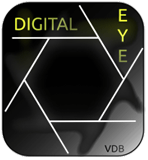My opensource workflow
Being a enthusiastic linux user for more than 15 years I wanted to share the workflow I use to edit my photography.
To start with I use canon and shortly Fujifilm will join the mix. So it’s important I can open the raw files and have lens correction if necessary.
To calibrate my screen so I get the right colours I use a datacolor spyder in conjunction with the open source program DISPCAL. It gives a lot of options and recent iterations have become more user friendly. It works on top of Argyll CMS. The program is available for linux, mac os x and windows.
If you want to read more go to their website: https://displaycal.net/
Once this is set up, I need to download my pictures. For that I use rapid photo downloader. It alows for an easy setup with names of the files and folders based upon EXIF info, separate folders for images and videos, use multiple sources to download the pictures, a backup function while downloading, …
A little step I add to this is manually adding some identifier to the folder name, it’s just easy for me to hit search and find the folder I want in seconds.
visit the rapid photo downloader site at: http://www.damonlynch.net/rapid/index.html
Afterwards I use a program which I have grown very fond of. It’s available for mac os x and linux at no cost and is a great RAW editor. This gem is called darktable. It allows for a quick view on the RAW files and sorting them immediately with stars and colours. From there the possibilities are humongous from white-balans up to adjusting parts of the picture in a layer-like manner. All non destructive, the program makes a file beside the picture with the settings, this way you can even edit an jpg file without having to worry about your original one. There is also a possibility to install presets, you can work in batch, …
Read more about darktable on: http://www.darktable.org/
When done I export to some good quality jpg but then I need to get some smaller versions and have a watermark. To do this job I use the application phatch. This is a neat little program allowing for a modular take on doing edits on pictures. You can just select the type of edit you want and then fill in the values you need. The edits get stacked in the queue they will get executed. Why I don’t do the watermark in darktable? That is because I then have to do two exports, with this program I only have to do one export and not worry about messing edits up by removing parts of the process .
This program is also available for mac os x and linux: http://photobatch.wikidot.com/
And last but not least, I need to be able to use my canon pro 1 printer. It is still painful not having real canon pro photo printer drivers on linux. And before I found out about turboprint I had an old laptop with windows installed, which I also had calibrated off course, next to the printer. At that time it was the pixma pro 9000 mark II. But that was a hustle. Then by coincidence I found the program turboprint. It’s available for linux, mac os x and windows also a arm version is available. It comes at a cost but it gives you access to updates too and the rates aren’t too steep.
The drivers support most of the features the original driver supports, has color-management, you can send in a printed example to get it color profiled for you at low cost, has ink management, a possibility to use cmyk, …
Maybe when there isn’t a driver available anymore for your printer they can help out. Their driver has a 30 days trial before you need to buy. Visit them here: http://www.turboprint.info/
For viewing the pictures there is a whole array of possibilities.
I use shotwell because it’s just basic and allows me to catalogue my pictures. https://wiki.gnome.org/Apps/Shotwell
For quick viewing I use eye of gnome, just a viewer with no gimmicks mean and lean. https://wiki.gnome.org/Apps/EyeOfGnome
A little adjustment? then I bring out gthumb. https://wiki.gnome.org/Apps/gthumb
If the editing becomes more of a big work or I need to make a card or other specials then there is one program I return to. It’s a difficult one to master, but if you have no background with photoshop as I did it learns as quick as photoshop. For people coming from photoshop and whilling to try out the gimp, you can install a sort of theme which changes the interface and shortcuts to the ones of photoshop.
It’s also available for linux, mac os x and windows: https://www.gimp.org/
So this is about the end of my workflow, enjoy the read and let me know if it helped out or you have good advice for me!
Wim




Very interesting, Wim! Darktable even runs on the Raspberry Pi, be it very slowy!
maybe compiling darktable from source might speed it up a bit. but mostly it will be due to memory shortage I suppose.